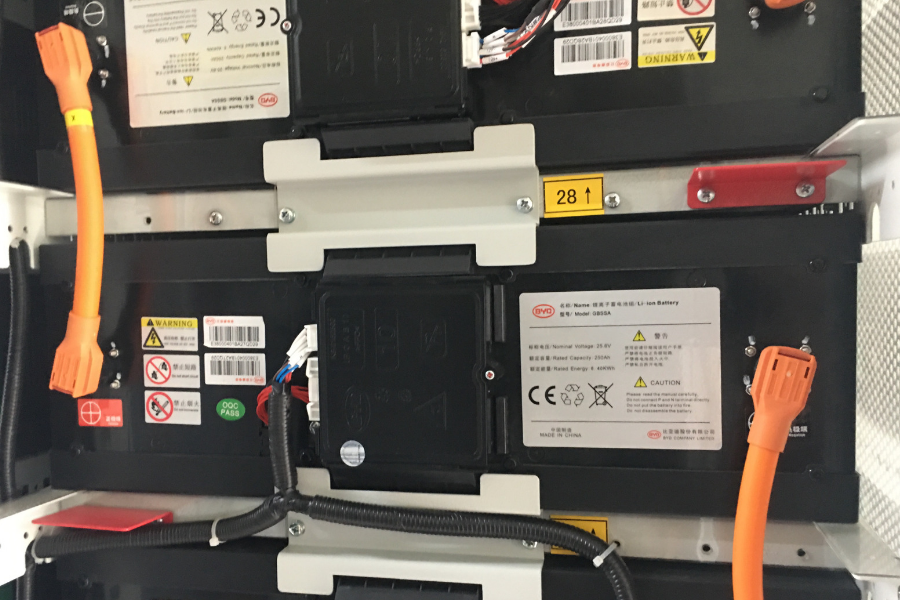Major steps for battery storage signal time for more industry support for smaller-scale schemes
There have been two exciting items of news in the last few weeks, which seem to pave the way for a bright future for battery storage. However, more must still be done by the clean energy industry to become less reliant on Government support and allow investments in battery storage to flourish, particularly in smaller organisations.
Guaranteed floor price for Clayhill storage
Anesco announced on 21 March that they have reached a deal with EDF Energy to provide a guaranteed floor price for their co-located 16MW solar and battery storage site at Clayhill. This is a significant step forward for the UK renewables industry.
This ‘first-in-the-sector’ deal sees the Big Six energy supplier providing a guaranteed minimum revenue for the battery storage output. Using their expertise in trading and dispatching assets, EDF Energy will bid the output into wholesale markets through their 24/7 trading platform and secure contracts with grid operators.
Falling costs of lithium-ion batteries
The price of lithium-ion batteries continues to fall; and the rate of cost reductions has accelerated. According to the latest (26 March) report by Bloomberg New Energy Finance (BNEF), the levelised cost of electricity (LCOE) for battery storage – that’s the average cost for building and operating a scheme – has fallen by 35% to £141.5 per MWh since June last year.
This has opened the door for more businesses to invest in batteries to increase their energy resilience and generate revenue by providing services to the grid.
But the challenge remains
Despite the falling costs, battery storage investment still carries a high element of risk. The multiple revenue streams, savings and returns you can make from the investment in a battery are highly complicated and offer little certainty. There have previously been no guarantees of income levels for any storage scheme operator.
Looking back three years for example, if a business was going to invest £100,000 in a solar PV scheme they’d have considered the cost of investing, the revenues they were going to get from their investment and how certain those revenues were going to be. With Government subsidies for renewable electricity generation (through the Feed in Tariff and ROCs), they were guaranteed a double-digit return, indexed to RPI for 20 years. There would have been other risks to consider, but in principle these investments were something of a no-brainer. From the £100,000 investment, payback would be within 10 years, and there would be a safe and guaranteed “pension style” income for up to 20 years.
With battery storage, it’s different. If you invest £100,000 in a battery today, while there are guarantees around a limited slice of the revenue stack, the certainty of these revenues only extends to one, two or three years.
There are also fundamental technical considerations to consider which underpin the investment returns: the capacity and the duration of the battery. Indeed, cannibalisation of savings and revenues can occur, in particular where demand-side response, or other on-site assets could perform the same function as the battery.
Nevertheless, by offering a guaranteed minimum income, EDF Energy is giving Anesco certainty in the investment of its large 6 MW battery storage scheme; of course, the level of the floor price and the management fees EDF are charging are critical to the equation.
If the wider industry could offer guaranteed minimum revenues for smaller, behind-the-meter sites, the reduced investment risk would make any battery storage project look more viable. This would encourage more investment in the technology and be a huge boost to the battery storage market.
Time for energy suppliers to step up
The industry has become too used to Government intervention or subsidy incentives to provide a safe minimum return. Now it’s time for the industry to act and to create more certainty. Those who understand energy and risk, can manage that risk on behalf of would-be storage investors.
Those with the right skills to optimise and manage the output of a battery are the energy traders within energy suppliers and aggregators. They understand the market risk and the buying/selling of power and can ensure battery owners get the best revenues from their investment.
Consider some of our typical clients looking at investing between £50,000 and £250,000 for behind-the-meter batteries of 50-200kW. It’s not a huge investment, but one that must be carefully considered. If an energy supplier offered a guaranteed, minimum floor-price over, say, 5 years, it would make businesses more comfortable investing in batteries alongside their solar or other on-site generation.
How Roadnight Taylor are helping
We’re helping our clients look at the feasibility, modelling and project management of battery storage installations. As independent consultants, we are focused on helping our clients invest in the right schemes from the right contractors – and matching them up with the right energy suppliers, with the right tariff structures, to optimise their particular investment.
On behalf of our clients, we are engaging with energy suppliers to test and develop products that provide better price incentives to support battery deployment and demand-side response uptake.
This article was first published on Linkedin on 16 April 2019.
 Contact us
Contact us
To find out more about how we can help you invest wisely in battery storage, call us on 01993 830571 or send us a message via our contact form.


 Contact us
Contact us